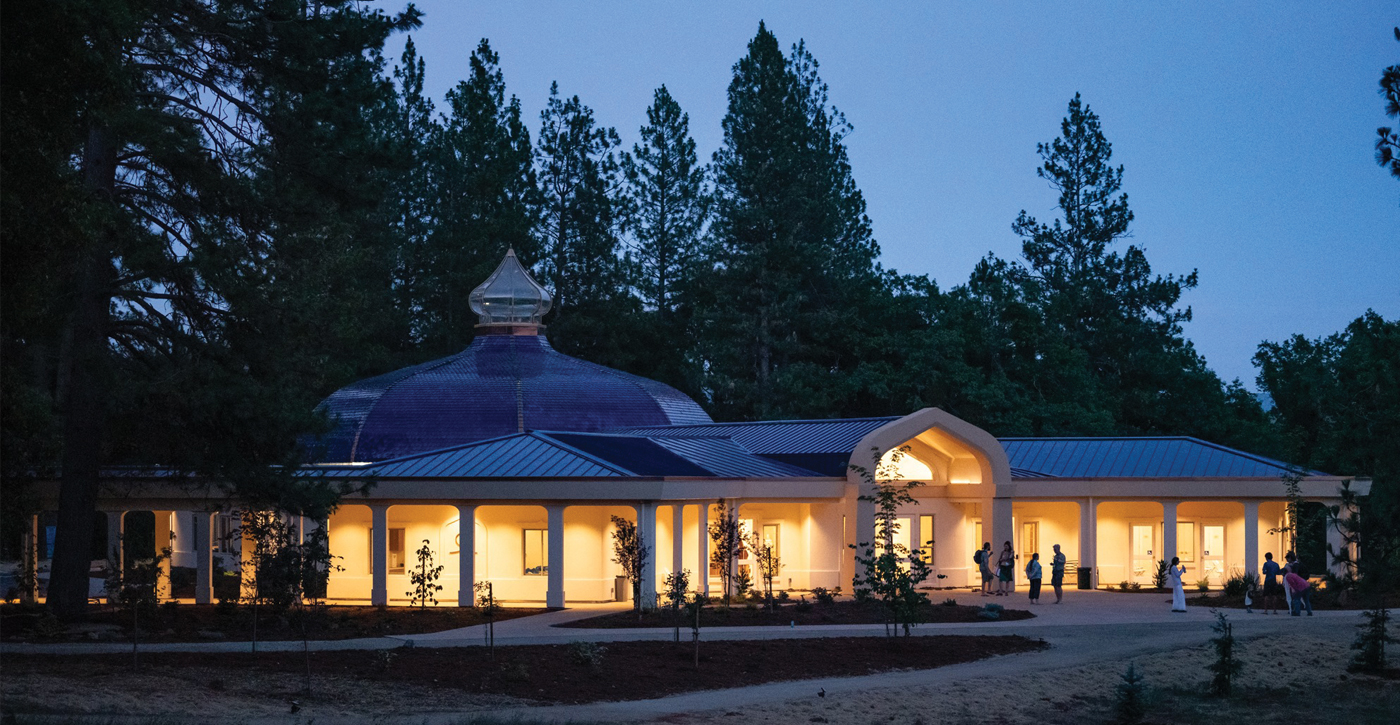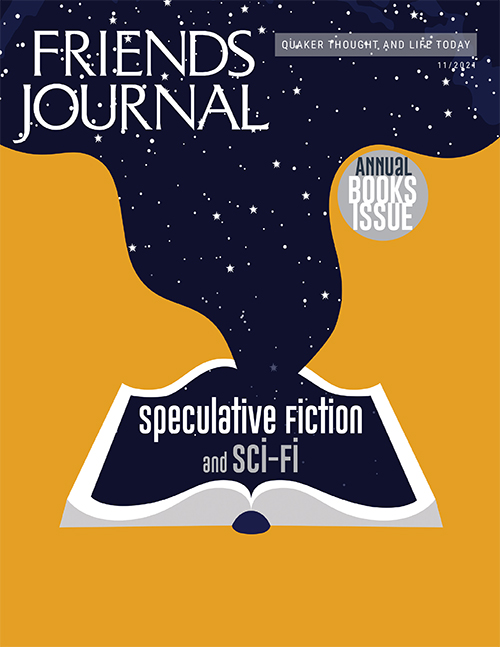Bless a temple? How do I do that? Do we even do blessings? I asked myself these questions after receiving an email requesting participation in the blessing of a new Temple of Light in an interfaith ceremony at the nearby rural Ananda community. The language threw me. How does a Quaker bless something? I’ve never heard of that. What do I do?
The email came because our meeting participates in an informal support group of clergy from different faiths in the county. It’s the 50-year anniversary of Ananda Village in Nevada City, Calif., and six ministers from different peace-oriented religious traditions were invited to come and “bless the Temple of Light.”
Paramahansa Yogananda wrote Autobiography of a Yogi (first published in 1946), and the Ananda community was founded by one of his disciples. It has over 200 members living on 700 acres in the Sierra Nevada mountains; another 200 live nearby. There are 5,000 members worldwide. The community is 20 miles from my home in Grass Valley, Calif.
A later email clarified the request. We were invited to give a brief “affirmation of peace in our faith tradition.” I wondered: what does it mean to affirm peace and how does a Quaker do it “in their faith tradition”? It took a while to realize that affirming peace was not the same as describing the Quaker peace testimony or bragging about all the great things Quakers have done for peace. I eventually concluded that affirming peace meant saying why we Quakers think it’s a good thing.
When the day came, I drove to the temple. The winding road goes over the South Yuba River and through the forest. I passed picturesque old buildings with weathered wood and rusted, corrugated metal roofs.
I arrived an hour early for a rehearsal. Ananda Village is beautiful. I found the temple, and, as I was about to enter the room where the ceremony would be held, I’m told to remove my shoes. If I’d known this, I wouldn’t have put on my pair of dress socks with a hole in one of the big toes. I worry that the representative for the Religious Society of Friends will look like a doofus in front of an audience of 250, and that this will be immortalized in the video of the ceremony they planned to put on the Internet. But then I noticed that a lot of the people present were barefoot, so I went back, stuffed my socks in my shoes, and joined the five clergy.
During the rehearsal, a swami told us that it’s a fire ceremony and when we speak there will be a small fire between us and the microphone. After each of us speaks, she will put a spoonful of ghee (clarified butter) on the fire. Before I spoke, another swami from the Ananda community talked about the Inner Light in all of us and how it can be our guide. When it was my turn, I said the following:
I am honored to be invited here. I understand that many people here (in this room) bow and say “namaste,” and I understand that means “I bow to the Divine in you.” I believe we have something in common. We Quakers also believe that there is something of God in everyone. We listen to that something—that Spirit—and it guides us. And it never guides us to violence and war.
We try to see and speak to the God in you. When I come up and see the God inside you, I am likely to love and appreciate you—even if you see me as an enemy and want to harm me. When Quakers get into a conflict or see one, we try to resolve it nonviolently.
Because we see God in everyone, we don’t fight in wars and we’re active in antiwar movements. You may see us in protests and demonstrations.
So, what causes violence and war? They come from injustice, bigotry, and oppression, so we work to eliminate these causes of war. When we work for the rights and dignity of immigrants, People of Color, prisoners, the poor, and other oppressed groups, we see this as work for peace. And historically, that’s why we were pioneers in the movements against slavery, for women’s right to vote, for humane insane asylums, for education reform, and for humane prisons. It’s the reason that during and after World War I and World War II, we fed millions of starving people.
And as our founder, George Fox, said, when our lives are examples that affirm our commitment to peace and the Spirit, we will walk cheerfully over the earth.
Afterward many people thanked me for giving the talk and said they enjoyed it. One especially thankful man told me that Quakers in his hometown helped him prepare to be a conscientious objector and that this saved him from having to fight in Vietnam.
During a conversation with the swami who spoke about the Inner Light, he shared some meditation techniques that help calm the mind and do what Friends might call centering down: different language for a similar or identical spiritual practice. He said this helps him to contact the Inner Light and receive guidance. Another person joined our conversation and said that he was raised a Quaker, went to Quaker schools, and that now he is part of the Ananda community. We all agreed that the similarities between the two views are striking. The Quaker and Ananda ideas of the Inner Light are a lot alike, and this makes sense. If the Inner Light is real, it wouldn’t be only Quakers who know about it—others would too.




Comments on Friendsjournal.org may be used in the Forum of the print magazine and may be edited for length and clarity.